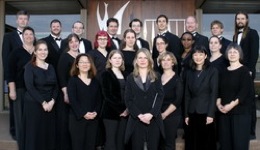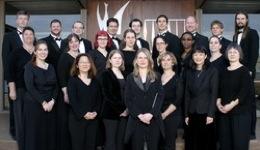
Seeman is not your average choral conductor (then again, is anyone?). She has even built herself a two-octave, chromatic, wine-glass organ on which she plays alternative and other “off-kilter” avant-garde music. (She’s not saying which varietals she favors.) She has recorded music for theater productions, as well as played arrangements of songs by composers as varied as Kurt Weill and Brian Eno. These interests complement her traditional background (a DMA in conducting from the University of Iowa and a Master's from UCSC), so you won’t be surprised to hear that the holiday concert she has assembled is an amalgam.

“I like to program in a way that has a thematic center,” she says. “A program is most exciting when you come away knowing something about a region or period. And there’s such a depth of transference of musical styles from Spain to Latin America, so I thought that would be an interesting topic to delve into. And within that unity, there’s a tremendous amount of diversity. I always look for that contrast in unity.”
The anchor for this concert is Ariel Ramirez’ Navidad nuestra, a Christmas oratorio in six poems by Felix Luna. Ramirez was an ethnomusicologist and composer who is famous for his Misa criolla (Creole Mass, 1964), based on Argentinean folk music. In Navidad nuestra, which dates from the same year, he pairs each poem with an Argentinean dance. The first of these, a gentle chamané, recalls, in style and meter, the European pastorale, which is often associated with the Christmas story. This provides just one of the many back-and-forth connections that cement this program.
To help perform Ramirez’ spirited work, Seeman has had recourse to musicians from the other end of the South American continent — the established Venezuelan tenor Jimmy Kansau; and the V-Note Ensemble, a four-member band that fuses traditional and folk music with jazz, veering from the joropo to swing and embracing calypso, bebop, and many other genres.
The rest of the program, the result of much winnowing, includes the 16th-century polyphonist Tomas Luis de la Victoria’s beloved Christmas motet O magnum mysterium; Heitor Villa Lobos’ The Manger, one of a number of brilliant choral works he composed as director of music education for Rio de Janeiro; the world-famous villancicos called E la don don and Ríu, Ríu, Chíu; four unpublished arrangements of South American carols by the Mexican composer Max Lifschitz, one of which is sung in Aymara, a native language of Peru (spoken by over a million people); and a modern setting of the Marian hymn Ave maris stella by Javier Busto.
“It’s a much more rhythmically exciting program than we normally do,” says Seeman, putting herself in contention for the understatement-of-the-year award. Don’t think it’ll be your average choral concert; instead, bring your dancing shoes.

